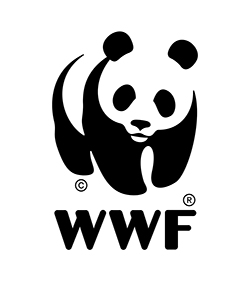Every financial institution’s (FI) potential exposure to financial crime risks linked to land conversion is dependent on the location, nature, and scale of its financing operations and business activities.
However, all FIs should incorporate governance to manage potential exposure into their existing financial crime and environmental, social and governance (ESG) frameworks, to foster a company-wide approach to tackling these risks. A carefully considered and implemented framework will help firms meet their regulatory requirements and avoid legal, financial, and reputational damage.
Whilst there is no one-size-fits all approach, and every organisation should consider their specific business activities, this panel presents a best practice approach that can be implemented to establish effective risk management structures. The six core components of an effective strategic framework are:

Risk assessment and strategy – Outlining best practices for a land conversion-linked financial crime risk assessment, which serves as a key step towards helping senior management understand the risks the FI is exposed to and subsequently developing an anti-financial crime strategy and risk appetite framework.

Policies and procedures – Mapping out best practices for the implementation of internal policies, procedures, and controls aimed at managing financial crime risks associated to land conversion for FIs. This will provide a repertoire of best practices and useful guidance on anti-financial crime policies, procedures, and processes, including those specific to supply chain due diligence, transaction monitoring and customer due diligence.

Systems and tools – Understanding what systems, tools and safeguards a firm needs to mitigate its risk exposure to land conversion and associated illicit financial proceeds. A particular focus will be placed on the tools that can help firms undertake their customer, supply chain or staff due diligence and monitor customer transactions and payments. Another key component will be identifying technology that can help enhance supply chain traceability.

Culture, training and awareness – Highlighting the importance of ensuring that all relevant internal stakeholders are engaged with land conversion as an issue and that this is a topic championed by the CEO or a member of the board or senior management team. This section also includes information about a training gap analysis to understand the firm’s specific training needs.

Governance and management information – Setting out how firms can monitor and manage their adherence to their land conversion strategy and policy and how to measure how well teams are adopting processes, as well as the effectiveness of any related controls. This section will underline the importance of management information plans, as senior management and boards can only make the right decisions if they have the right level of data reaching them on a regular basis. This will also help firms determine what level of information and data should be provided, to whom and how frequently.

Periodic assessment – Setting out an assessment process and checklist for FIs to periodically assess their exposure to land conversion-associated financial and environmental risks. This includes assessing changes in supply chain risk exposure, as well as emerging risks related to new financial crime techniques and methods of land conversion.

ESG – Mapping out and describing how ESG functions and controls can help FIs manage their exposure to land conversion risk and identifying the greatest area of risk based on both ESG benchmarks and the United Nations Sustainable Development Goals.
Questions to ask yourself in relation to your organisation’s strategic framework
- Understand – Do you understand your organisation’s specific vulnerabilities to land conversion and associated financial crime risks?
- Identify – Are you confident you would be able to spot potential links to land conversion and financial crime, even if through indirect exposure?
- Innovate – Are you using the most up-to-date technology and tools to conduct due diligence and manage financial crime risks?
- Act – Are you confident your team would know what to do if a potential suspicion was raised internally? How would you report such suspicions to relevant authorities?
- Support – Do you have the framework in place to continue to grow and support your company’s anti-deforestation and anti-financial crime efforts?
- Improve – Do you review and refresh your policies, systems and controls annually to ensure they continue to be robust in the face of evolving risks?
Risk Assessment and Strategy
In order to understand and mitigate land conversion risks, it is essential to carry out periodic business-wide risk assessments to understand and manage exposure to land conversion and associated financial crimes. Conducting thorough risk assessments allows firms to identify potential exposure and develop strategies to manage them effectively.
- An assessment should be business-wide and the first step in completing the firm’s response to land conversion and associated financial crime risks.
- An assessment should be aligned with the firm's governance framework and risk appetite.
- An assessment should be carried out not only on direct investments or clients, but also on indirect risks within supply chains and portfolios.
- Firms should consider performing risk assessments at least annually. However, assessments that are more frequent or less frequent may be justified, depending on the circumstances.
- The specific risks faced by a firm will be dictated by, for example, the services it offers, the jurisdictions it operates in, the types of customers it attracts, and the complexity of its business operations.
- Firms should identify their comfort level and risk appetite based on resources available and what measures are needed to protect against environmental, legal, financial, and reputational risks.
- Firms should consult guidance issued by regulators, industry working groups, trade associations, specialised research outlets and civil society organisations when compiling their assessment.
- Land conversion, as a key driver of global emissions, should be included in all climate change impact assessments and net-zero commitments.
- Disclosing the results of their land conversion risk assessment and strategy transparently (e.g. in an annual report) can introduce some external accountability (e.g. from customers, clients, NGOs and rights-holders). This helps keep momentum and focus, justify resource, and encourage other firms to follow suit.
- Assess both the impact and likelihood of land conversion risks.
- Understand the jurisdictional risk exposure of the firm.
- Define key mitigating controls.
- Map against firm’s risk appetite.
- Map against long term land conversion and anti-financial crime strategy.
For a detailed risk assessment of potential exposure to land conversion related financial crime broken down by country and commodity, please see the Risk Assessment panel of the toolkit.
Policies and Procedures
It is important for firms to set out clear policies and procedures for an effective organisation-wide response to tackling potential links to land conversion and associated financial crime. These policies and procedures provide a framework for identifying, assessing, and mitigating risks across all levels of a firm.
- While a policy should work across the whole firm, we recommend creating specific procedures for each different business line or team, front-line business teams, risk and compliance, operations, and procurement.
- Starting from the top with senior leadership is important to ensure there is buy-in for the policies and procedures from everyone across the organisation.
- Leadership should also ensure clear responsibilities are in place to make sure employees know how specific policies apply to their roles and teams.
- Clear procedures should define and streamline communication and coordination among different departments and roles, which can help ensure no risks go undetected.
- Policies and procedures should be displayed in a way that is accessible, effective, and understood by all relevant staff.
- Policies should be reviewed regularly to account for new risks and external events. This is especially important for land conversion risks as this is an area of transnational crime that is both evolving quickly and heavily impacted by external events.
- Policies should document a company’s approach to legal and regulatory requirements, including AML/CFT and anti-bribery and corruption.
- For preventing and mitigating land conversion, ESG policies are also beneficial and can be implemented to help protect a company from regulatory or reputational risks.
- Progress towards commitments made in policies should be published on an annual basis (e.g. in a report or on a firm’s website) using quantifiable metrics.
- Policies should cover all relevant commodities that a firm might deal with (e.g. soy, beef, minerals, timber, cocoa, coffee, rubber) and apply to all segments of a supply chain across all sourcing, transit and destination geographies. However, policy makers should understand that the highest risk commodities and jurisdictions may change over time as new trends emerge and put in place a mechanism for updating these as new information comes to light.
- Policies should cover all land conversion of all natural ecosystems rather than just deforestation.
- Policies should set out quantifiable specific targets, goals, commitments and timelines rather than generic aims.
Having clear policies and procedures for due diligence and ongoing monitoring is essential for keeping the firm safe from land conversion and associated financial crime exposure—as is red flag screening.
- Firms should conduct thorough due diligence on customers, staff, suppliers, investments, and third parties to identify and prevent direct and indirect links to land conversion and associated financial crimes.
- Due diligence should be robust and rigorous and verifiable by third parties.
- The responsibility for due diligence should not be shifted onto other businesses in the value chain; businesses should each feel responsible for conducting thorough due diligence on their entire supply chain and for assessing risks related to all of their activities.
- Effective internal and external communication and information sharing promotes collaboration, which improves due diligence across the industry.
- Firms should be ambitious with their screening and aim to go beyond standard industry practice; this includes screening not just for illegal deforestation but more widely, in alignment with initiatives such as the Consumer Goods Forum’s Forest Positive Coalition.
- Data should be requested directly from a third party where it is not publicly available.
- Ongoing monitoring helps firms screen business relationships against specific land conversion and financial crime data and red flags to identify any potential links to criminal convictions both during onboarding and on an ongoing basis. High risk third parties should be reviewed on at least an annual basis and non-compliant entities and those which are making too little measurable progress should be identified and engaged with.
- The results of due diligence should feed into policy decisions (e.g. certain trends or techniques that are being observed should be used to update high risk commodities or geographies).
The importance of having clear policies and procedures for reporting suspicious activity and transactions cannot be overstated. As outlined in the Typologies, Red Flags and Reporting panel of this toolkit, the financial services sector plays an essential role in identifying and reporting activities with links to land conversion linked financial and environmental crimes.
It is important to have:
- an effective internal reporting framework where staff know when, how, and who to report to when suspicions of links to land conversion or related financial crimes arise.
- clear procedures on how to report any suspicions to relevant authorities. The firm’s Money Laundering Reporting Officer (MLRO) should oversee and report suspicious financial activities to relevant authorities.
Systems and Tools
It is crucial to implement effective systems and controls to identify and manage direct and indirect land conversion and financial crime exposure. The use of innovation and the latest technologies across these systems and controls is also key.
- Strong systems and controls are designed to identify potential risks and suspicious activity, as well as make the internal reporting of these suspicions effective and clear.
- They help to operationalise the policies and procedures the firm has in place.
- Effective systems and controls include a combination of technology and human-driven due diligence and screening, customer and third-party onboarding, transaction monitoring, network mapping, fraud detection, and risk assessment.
- This can be a mix of custom-built internal resources (including spreadsheets, databases, risk maps and calculators etc) as well as external technology and platforms that can help the firm complete customer, supply chain or staff due diligence and monitor customer transactions and payments.
The most effective systems and controls integrate innovative technologies and tools that work within the business environment. It is important to ask internal teams what systems, software, and platforms they need to ensure success.
Some potential systems and tools include:
- End-to-end Software as a Service (SaaS) screening, monitoring, and investigations platforms that can help optimise the effectiveness and efficiency of identifying and assessing potential links to land conversion and related financial crime risks.
- Risk mapping software that helps search and investigate network connections between individuals and legal entities.
- Automated ongoing monitoring systems that can conduct daily ongoing screening across all clients and counterparties, incorporating a rich array of data sources, as well as specific key word searches and red flag indicators.
- Electronic identification and verification (eID&V) tools that can perform live biometric facial recognition and verify documents for authenticity.
- Digital risk assessment diagnostic and benchmarking tools to provide automated, tailored financial and environmental crime risk assessment reports.
- Climate and environmental data analytics tools, which can analyse data to identify emerging trends and patterns associated with land conversion risk.
- Financial institutions can use satellite imagery, geospatial and remote sensing data to monitor land use changes in areas where they have investments, particularly in sectors like agriculture, forestry, and mining.
- Financial institutions can use supply chain transparency tools to trace the origin of products and commodities in their investment portfolios. Blockchain technology, for example, enables transparent and immutable records of supply chain transactions.
Data is key to any effective system or use of technology. Specialist data that draws on international databases and research into different financial crime typologies is particularly valuable.
This includes official conviction data published by national and international authorities, as well as corporate records, sanctions and PEPs lists, and adverse media. A rich dataset comprised of these components is essential for effectively screening clients, suppliers, and third parties against all potential risk exposure and links to deforestation and associated financial crime.
Culture, Training and Awareness
Promoting a culture of openness, education, and awareness is important to ensure the effectiveness of any anti-land conversion and related financial crime response at the firm. Ensuring a strong culture and effective training goes beyond box ticking and should be embedded in the day-to-day actions of the firm.
- A strong anti-land conversion and related financial crime culture is underpinned by transparency, open communication, and ethical and environmentally friendly decision-making.
- Successful culture is built on collective values, attitudes, norms, and behaviours.
- A strong culture will help prevent inappropriate and risky behaviour that could damage reputation or lead to financial or legal consequences. It also helps protect against employee, stakeholder, or investor backlash.
- Senior leadership plays a crucial role and has a duty to set a clear tone from the top. This includes:
- Promoting a positive and consistent message.
- Embedding transparency and accountability into day-to-day decisions.
- Creating an environment of safety over fear.
- Incentivising and recognising positive behaviour.
- Companies should ensure all staff possess the skills, knowledge, and expertise needed to carry out their functions effectively. Many staff will not be fully aware of the scale and impact of land conversion and associated financial crimes, or how it relates to their specific role and daily work. Busy staff also face multiple competing priorities. Raising awareness of environmental and associated financial crime risks through periodic training is therefore vital to ensure that focus on these threats is not lost.
- Firms should incorporate land conversion and associated environmental and financial crime risks into their enterprise-wide financial crime training programmes, given their status as predicate crimes to money laundering.
- Training should incorporate guidance on how to spot signs of land conversion and associated financial crime risks, and then how to report these internally. Having a clear internal reporting system that is understood by all staff is vital.
- Staff across all functions of a business should be given appropriate training on how to implement anti-financial crime policies, systems, and controls.
- Training and awareness building can take many forms. It is worth considering incorporating a blend of digital learning, classroom-based training, and other educational resources such as research reports, to appeal to individuals with different learning styles/preferences.
Governance and Management Information
It is essential to ensure that the firm is effectively implementing all components of its strategic framework. Otherwise, not only will its efforts and resources be wasted, but it will also be exposed to the reputational, ESG and financial crime risks associated with land conversion. A good governance and management framework will help keep a pulse on whether the firm is achieving this by allocating responsibility, effective oversight and processes for monitoring and evaluating all initiatives. This can also be beneficial when it comes to ESG reporting.
- A good governance framework sets out how the company will monitor, evaluate, and manage adherence to its land conversion and financial crime strategies and policies.
- As part of this, the firm should map out which governing bodies and leadership will be responsible for oversight of which policies, as well as which body is responsible for the detailed monitoring and testing of effectiveness.
- ESG governance can be an important line of defence against deforestation and financial crime risks as well. By asking the right questions and holding the organisation accountable to certain environmental and governance standards, it is possible to increase both environmental crime understanding and risk analysis.
- Management information (MI) helps provide senior leadership with a comprehensive understanding of land conversion and financial crime risks and how these are being managed across the firm.
- Senior management can only make the right decisions if they have the right level of data being fed to them on a regular basis, and if this data is both specific and up to date.
- The MI plan should outline what level of information and data is being provided, to whom, and how frequently.
- Regulators will often want to see what MI is being fed into senior management and other levels of the organisation.
- In many countries, it is a regulatory requirement for MLROs to produce annual reports. These should reference all associated financial crimes, including those linked to deforestation.
Periodic Assessment
If firms don’t consistently review and assess their effectiveness in detecting potential links to land conversion and associated financial crimes at all levels of the business, efforts will likely stagnate and cannot be effectively evaluated, which risks inefficiency and wasted resource.
- Any business risk assessment should be dynamic and regularly updated.
- As with any risk & control framework, it is important to test and measure the effectiveness across different levels of the organisation to continuously adapt and improve corporate response and culture.
- Any assessment results should be incorporated into a firm’s performance management framework and ongoing training needs analysis.
- Firms can also consider completing company-wide corporate culture assessments. This provides another means of assessing and checking the understanding of land conversion and associated financial crime risks and the practical application of their specific control framework across the organisation.
- Senior management should be looking to strengthen the effectiveness of controls and culture through a combination of internal and external reviews. Senior management should also keep up to date on emerging threats and legal and regulatory requirements.
An enterprise-wide monitoring plan should be developed and competed using the “Three Lines of Defence Model”, which broadly incorporates:
- 1st Line of Defence: Quality Assurance – scoring and assessment done on an individual or team basis, by the functions that own and manage the risk.
- 2nd Line of Defence: Compliance Monitoring – periodic assessments of policies and procedures across specific thematic areas or sections of the organisation, by the functions that oversee the risk or who specialise in compliance.
- 3rd Line of Defence: Internal Audit – evaluating the effectiveness of the approach, reporting into a board or committee, by functions that sit outside the risk management processes of the first two lines of defence.
ESG
It is critical to consider Environmental, Social, and Governance (ESG) factors when helping financial institutions and other businesses manage their exposure to land conversion risk. As more firms are facing increasing pressure to identify ESG risks and incorporate them into risk management efforts—both from external stakeholders like customers and clients and internal stakeholders like shareholders—understanding how land conversion and related environmental and financial crimes factor into ESG risk is paramount to ensuring the long-term success of the business.
- From investment decisions to lending practices, the overall ESG risk management strategy of a firm should promote sustainable, ethical, and legal practices.
- Financial institutions can use ESG criteria to assess the land conversion risks and environmental impact of their investment portfolios and clients in higher risk sectors such as agriculture, forestry, and mining.
- Firms should develop and enforce exclusion policies that avoid investment in companies or projects linked to illegal land use practices.
- Firms can instead look to promote and invest in sustainable financial products and practices aimed at conservation and reforestation projects.
- The overlap between ESG and land conversion goes beyond just environmental and financial crime risks. Social and human rights risks related to land conversion are also key to consider. It is important for firms to engage with stakeholders such as Indigenous Peoples and Local Communities, and NGOs to understand the social impacts of land conversion and incorporate these into decision-making and risk management.
- Transparency and reporting are important. Firms should publicly report their progress on land conversion impact and other ESG commitments and Key Risk Indicators (KRIs). Impact and annual reporting can serve as a key way to increase transparency and accountability.
- Firms should establish robust governance frameworks that include clear policies on land conversion and sustainability. This should be backed by board-level oversight and accountability. Incentive structures that follow sustainable practices around land conversion can also foster positive decision-making across the firm.
- Firms should ensure adherence to key international standards and frameworks such as the Forest Stewardship Council (FSC), the Roundtable on Sustainable Palm Oil (RSPO), and the No Deforestation, Peat and Exploitation (NDPE) Commitment.
- Firms should adhere to the recommendations as laid out by The Financial Action Task Force (FATF):
- The FATF recommends that environmental crime—which covers illegal logging and forestry crimes—be considered a predicate crime to money laundering in all countries’ national legislation.
- Several of the FATF’s 40 Recommendations are of particular relevance to land conversion, including:
- Recommendation 4 - Competent authorities should freeze or seize and confiscate assets laundered or proceeds from predicate offences.
- Recommendation 10 - Financial institutions are required to undertake Customer Due Diligence (CDD) whilst establishing business relationships and when carrying out transactions which are of a suspicious nature.
- Recommendations 20 & 23 – If a financial institution has reasonable grounds to suspect that funds may be the proceeds of a criminal activity, it should promptly report its suspicions to the FIU.
- Firms should adhere to guidance as introduced by the Accountability Framework initiative. The Accountability Framework initiative (AFi) is a coalition aiming to provide a common baseline and support for companies trying to improve the ethicality of supply chains, and has introduced new guidance specifically tailored to financial institutions, placing a strong emphasis on due diligence concerning deforestation, land conversion, and human rights. It recommends that firms:
- Establish responsible lending and investment policies, assess risks, engage clients and disclose progress.
- Assess environmental and social risk and performance in their portfolios using reporting standards and platforms such as the Forest 500 assessment and the Ceres’ Engage the Chain
- It is also helping to build a consensus around a single definition of forest; currently, there are over 800 definitions of “forest” in use worldwide, leaving ample room for actors to circumvent rules around land conversion.
- Firms should benchmark their ESG criteria against the United Nations Sustainable Development Goals (SGDs), as this can help align firm practices with SDGs. It is important to keep in mind how deforestation relates to all SDGs, but some key ones to consider are:
- SDG 3: Good Health and Well Being – By mitigating deforestation risks, firms can help decrease health related consequences of illegal deforestation, such as exposure to lead from illicit mining.
- SDG 6: Clean Water and Sanitation – By mitigating deforestation risks, firms can help decrease water contamination and pollution from illegal deforestation.
- SDG 8: Decent Work and Economic Growth – By fighting illegal land clearing and deforestation practices such as illicit mining that uses forced labour, firms can help promote productive and decent work for all, as well as inclusive and sustainable economic growth.
- SDG 12: Responsible Consumption and Production – By promoting high standards for investments and clients related to production and consumption, firms can help reduce deforestation and illegal land conversion.
- SDG 13: Climate Action – By reducing deforestation, firms can help mitigate climate change and its impacts.
- SDG 15: Life on Land – By integrating anti-deforestation commitments into ESG frameworks, firms can help protect and promote sustainable use of forests and other ecosystems, including halting land degradation and biodiversity loss.
- Firms should also bear in mind the EU Taxonomy Regulation:
- The EU Taxonomy Regulation establishes a classification framework that defines when an economic activity can be considered sustainable in the EU. The regulation came into effect in 2020 and applies to financial institutions, requiring them to disclose the proportion of their financial activities that are taxonomy-eligible and aligned. The framework serves as an important market transparency tool and helps direct investments to the economic activities most in line with environmental and sustainability objectives.
- Firms should adhere to the Sustainable Finance Disclosure Regulation (SFDR):
- The SFDR, adopted into law in March 2021, sets stringent minimum-disclosure standards to prevent greenwashing in investment products that claim ESG or ESG-related objectives. Applicable to all EU financial institutions and financial advisors, the SDFR aims to bring higher transparency to sustainability-related disclosures in the financial services sector at both the entity and financial product levels. This dual-level, double materiality reporting is intended to be integrated into their investment decision-making processes.
- While the SDFR does not primarily focus on deforestation, the regulation’s mandatory and voluntary disclosures will expose financial institutions which invest in companies with detrimental land-use practices that negatively affect biodiversity-sensitive areas, or those that lack a policy regarding deforestation. However, land degradation falls under the banner of voluntary rather than mandatory disclosures under the SFDR.
By integrating ESG criteria and controls, financial institutions can significantly mitigate their exposure to deforestation risk and associated financial crime, thereby contributing to global sustainability goals and ensuring a successful business.


The Environmental Crimes Financial Toolkit is developed by WWF and Themis, with support from the Climate Solutions Partnership (CSP). The CSP is a philanthropic collaboration between HSBC, WRI and WWF, with a global network of local partners, aiming at scaling up innovative nature-based solutions, and supporting the transition of the energy sector to renewables in Asia, by combining our resources, knowledge, and insight.